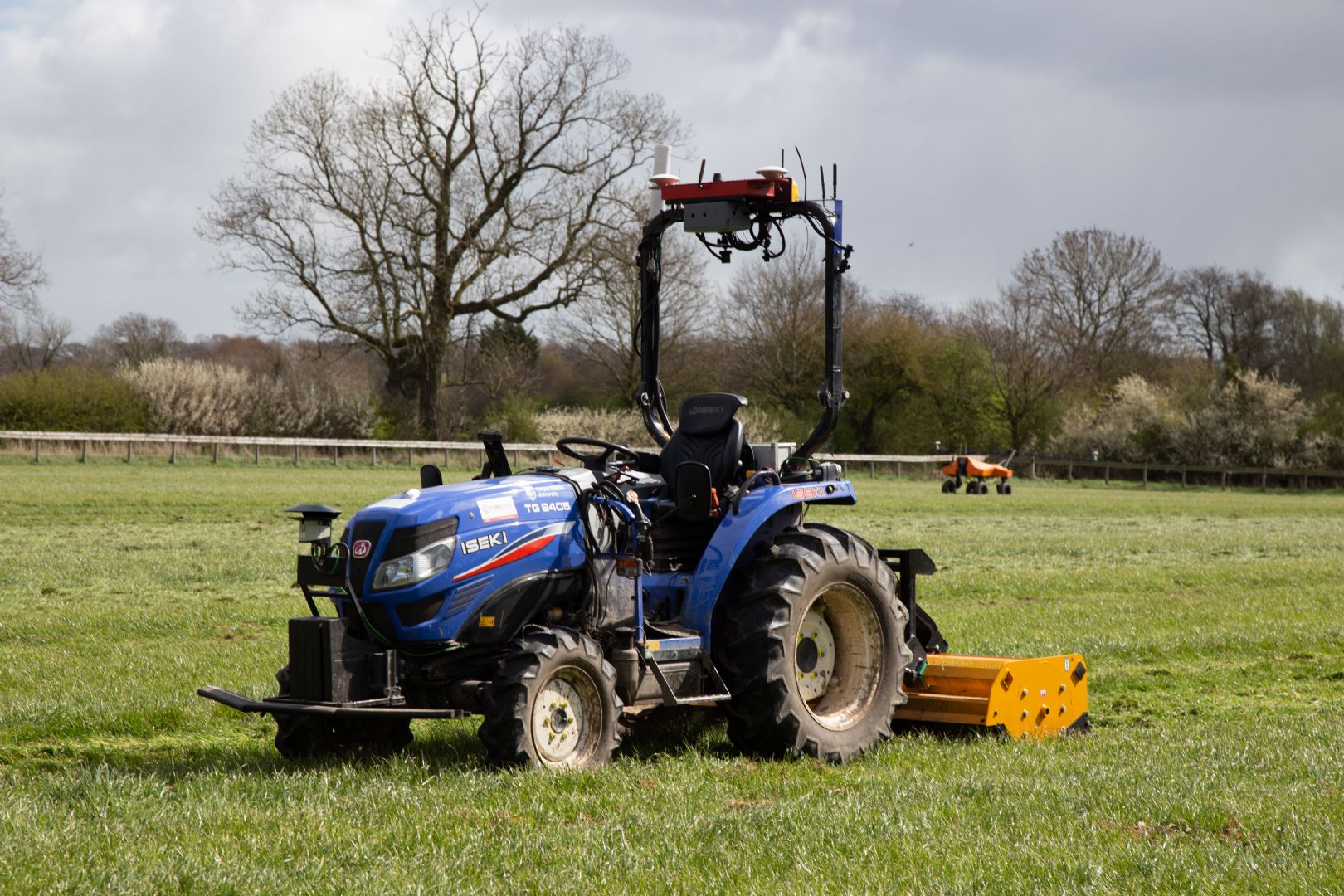
Use of autonomous vehicles in arable and horticultural systems could allow a move to use of smaller vehicles in farming, which would achieve greater precision while reducing soil compaction caused by large machinery.
Speaking at the RASE Farm of the Future event in April 2023, Mr. Kit Franklin, a senior engagement fellow at Harper Adams University, shared how the Hands Free Hectare and Hands Free Farm have demonstrated the advantages of autonomous vehicles being used in farming systems.
Impact of machine size on soil
Kit explained that in recent decades agricultural machinery has tended to increase in size, and larger machinery has been a major contributor to soil compaction, which in turn has led to a plateau in yields.He added that soil compaction also inhibits carbon sequestration in soils and has a negative impact on water infiltration, so a shift towards smaller, lighter machinery could help improve agricultural soil structure and health.
Impact of machine size on precision of farming
During the last three decades, as precision farming – putting the right thing, in the right place, at the right time and in the right way – has been acclaimed as the means to sustainable food production, the growth in size of farm machinery has limited precision.“Very large machines aren’t good at precision,” said Kit. “If you take yield mapping as an example, the first combines to yield map in the mid-1990s had 6m headers, but now we have 14m headers, which means our precision during that time has become half as good.”
He added that the same can be said for spraying equipment. “A local farm has a 52m wide sprayer boom, putting a single rate on across the whole sprayer’s width. There are technologies coming through to make that better, but that is essentially status quo.”
Kit explained that an autonomous system could remove the pressure of being limited by human resource, enabling the use of smaller machines which are associated with less risk of compaction and can be more precise with inputs. There is also the technology available to decarbonise the energy sources of these autonomous vehicles.
He said that diesel has been traditionally used on farms because it is a highly energy dense fuel source, and farming has required a lot of energy, but the move to smaller technologies, is opening the door for electrification and different energy sources, including solar powered electric.
Hands Free Hectare
Part of the remit of the Farm of the Future event was to demonstrate the practical solutions available to farms for decarbonisation. The autonomous vehicles and robotics technical session took place at the Hands Free Hectare, so attendees could see the machines in action where they have been used in the field.Kit shared that back in 2016 when he was researching and talking about autonomous farm vehicles, there was nowhere for people to see the technologies in practice. “The aim of the Hands Free Hectare was to give the world somewhere they could see automation in a field actually happening,” he said.
The field is a perfect square hectare. It used open-source technology and conventional, but small, farm equipment to grow the world’s first fully autonomously farmed crop in 2017.
“We drilled, sprayed, fertilised and harvested a crop of spring barley entirely autonomously,” said Kit. “We repeated that with winter wheat in 2018.”
In the six years following the first hands free crop, the Hands Free Farm, comprising of 5 fields covering 35 hectares has been set up. This demonstrates the use of autonomous vehicles and robotics in a real farm situation – the fields are irregular shapes, there are telegraph poles, oak trees and footpaths. Kit shared that the team at Harper Adams University has been able to develop a system that could cope with those things and thrive. “We’ve had some good yields from the Hands Free Farm while we’ve been farming it,” he said.
He shared that the team now have a 2m seed drill, a 2m combine and a sprayer that can spray at 2m intervals, so has developed a strip cropping trial. The trial is growing wheat, beans and barley in adjacent strips. Each crop will be individually managed and harvested, so there will be no need to separate them after harvest or use them as a feed crop. The purpose of the trial is to explore the use of autonomous vehicle technologies to enable the move away from monocrops and getting multiple crops into one place, to increase biodiversity, increase the soil’s capacity to sequester carbon and reduce reliance on nitrogen.
Economic impact of using autonomous vehicles in farming
Kit shared that the team has also done economic studies on the use of autonomous vehicles and robotics in farming. They have found that by using small light machines in swarms, it is possible to increase the number of units to cover a larger farm area.Economic analysis suggests a production cost saving of £20 to £30 per tonne when producing wheat. Critically, the cost saving associated with using autonomous vehicles is best on smaller farms, showing an opportunity for automation to enable smaller family farms to become more profitable. This bucks the ‘get big or get out’ trend that has been seen in farming over recent decades.
For more insights from the Farm of the Future event, visit the circular solutions from biowaste blog, or read the five steps to decarbonise and future-proof a farm business based on the final panel discussion of the event.





